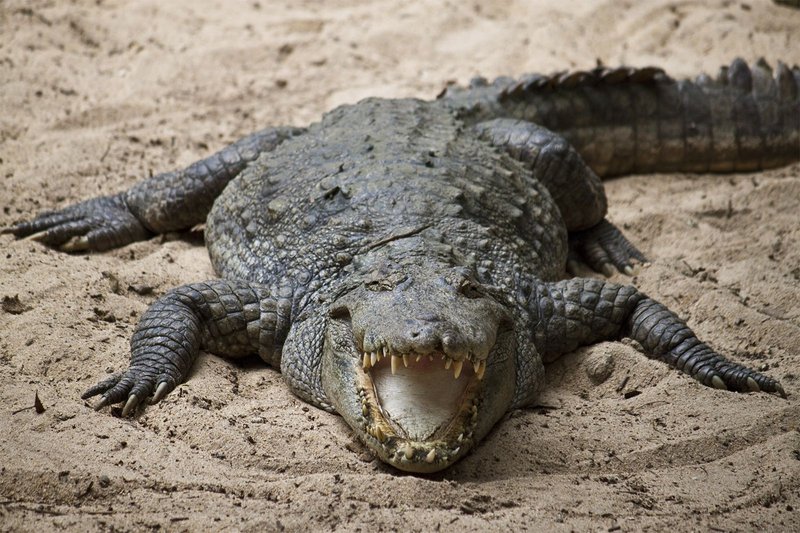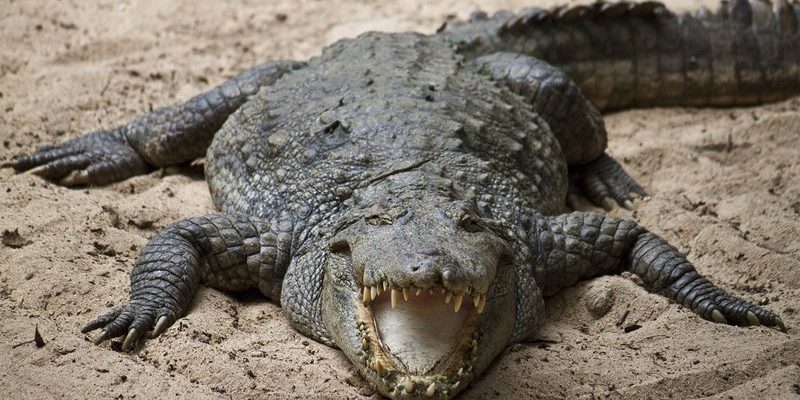
Imagine a scene: you’re on a riverbank in the heart of the jungle, watching these massive reptiles basking in the sun. They seem slow and lazy, but beneath that exterior lies a predator that’s perfectly adapted to its environment. Understanding crocodile behavior is key to answering whether they pose a threat to us. Here’s the thing: their danger level can depend on many factors, including their species, habitat, and, most importantly, interactions with humans.
Understanding Crocodile Behavior
Crocodiles are opportunistic predators, meaning they’ll eat just about anything they can catch. They’re not picky eaters—fish, birds, and even large mammals can make up their diet. However, what you might find surprising is that crocodiles generally prefer to avoid humans. Most interactions that lead to danger occur when they feel threatened or provoked.
The key to staying safe around crocodiles is understanding their behavior. When you see them lounging on riverbanks, they’re usually resting. But if you get too close, they might feel cornered. That’s when they can strike. Candor is important here: crocodiles can move faster than you think, especially when they feel threatened. They can sprint on land in short bursts and are incredibly fast in water.
It’s also worth noting that not all crocodile species are equally dangerous. Some, like the Nile crocodile or the saltwater crocodile, have a reputation for being more aggressive. In contrast, others like the American crocodile tend to be less of a threat. Knowing which type you’re dealing with can help assess the danger level.
Where Do Crocodiles Live?
Crocodiles inhabit a range of environments, from freshwater rivers and lakes to coastal areas. Their habitat plays a crucial role in their interaction with humans. For instance, saltwater crocodiles can be found in brackish waters and are particularly notorious for venturing into populated areas.
In regions where humans live close to crocodile habitats, conflicts can arise. Fishing, swimming, or simply enjoying a day at the river can provoke these reptiles. They see people as potential threats or even prey, depending on the situation. Thus, if you’re near crocodile territory, it’s essential to be mindful of your surroundings.
Wetlands, swamps, and mangroves are common crocodile habitats, providing them with plenty of hiding spots. Consider this: a crocodile can remain perfectly still while camouflaged in its environment, so you might not even see one until it’s too late. This stealth is part of what makes them such formidable predators.
How Often Do Crocodiles Attack Humans?
You might be wondering just how often these attacks happen. While true crocodile attacks on humans are relatively rare, they do occur, particularly in regions where people and crocodiles coexist closely. According to various reports, crocodiles kill about 1,000 people around the world each year, which, while alarming, is surprisingly low given the number of people living near crocodile habitats.
Many of these attacks occur when people inadvertently enter a crocodile’s territory, especially at dawn or dusk when these reptiles are most active. In many cases, the victims weren’t even aware they were in danger. Simply put, crocs are more likely to attack when they feel that their territory is being encroached upon.
Naturally, the likelihood of an attack can vary by region. Areas like Australia and Africa, where specific aggressive species thrive, report more incidents than places with fewer or less aggressive populations. Knowing the local crocodile population and their behaviors can significantly impact your safety.
Signs of a Crocodile Nearby
It’s essential to recognize the signs that indicate a crocodile might be in the area. If you’re venturing near water where crocodiles could be lurking, look out for the following indicators:
- Tracks: Large tracks on the riverbank are a solid sign of crocodile activity.
- Eggs: Crocodile nests can often be found near water, particularly during nesting season.
- Slid marks: Look for drag marks on the sand or mud that lead to the water; this is where a croc might have entered or exited the water.
- Sightings: If you see a crocodile basking in the sun or swimming nearby, take it seriously—keep your distance!
If you spot any of these signs, it’s wise to keep your distance and heed local safety warnings. Crocodiles are fascinating creatures, but they belong in their environment—not interacting with humans up close.
Staying Safe Around Crocodiles
So, how can you protect yourself when you’re in crocodile territory? Here are some tips to keep in mind:
- Avoid swimming: If you’re in an area known for crocodiles, it’s best to skip swimming altogether.
- Keep a safe distance: If you spot a crocodile, admire it from afar! Stay well back from the water’s edge.
- Be cautious at night: Crocodiles are most active after sunset. If you’re near water at night, it’s safer to stay away.
- Follow local advice: Pay attention to local warnings and guidelines about crocodile presence. They know best!
Understanding these guidelines can significantly reduce your risk of an encounter, allowing you to enjoy the beauty of nature without unnecessary fear.
Crocodiles as Part of the Ecosystem
Here’s the thing: crocodiles play a crucial role in their ecosystems. They help control fish populations and keep the balance in their habitats. By preying on sick or weak animals, they also contribute to the health of those ecosystems. So, while they can be dangerous to humans, they are also vital to the health of their environments.
In many cultures, crocodiles are symbols of strength and survival, embodying some of the more powerful forces of nature. Learning to coexist with them respectfully is essential. Awareness and education can go a long way in preventing unnecessary conflicts.
Crocodiles can indeed be dangerous to humans, but with the right knowledge and respect for their habitats, risks can be minimized. Understanding their behavior, recognizing signs of their presence, and practicing safety measures are critical steps for those who live or work near these amazing creatures. While they might be the stuff of nightmares for some, they also represent a vital part of the world’s wildlife. By embracing caution and learning more about them, we can enjoy and appreciate the wild landscapes they inhabit while keeping ourselves safe.

